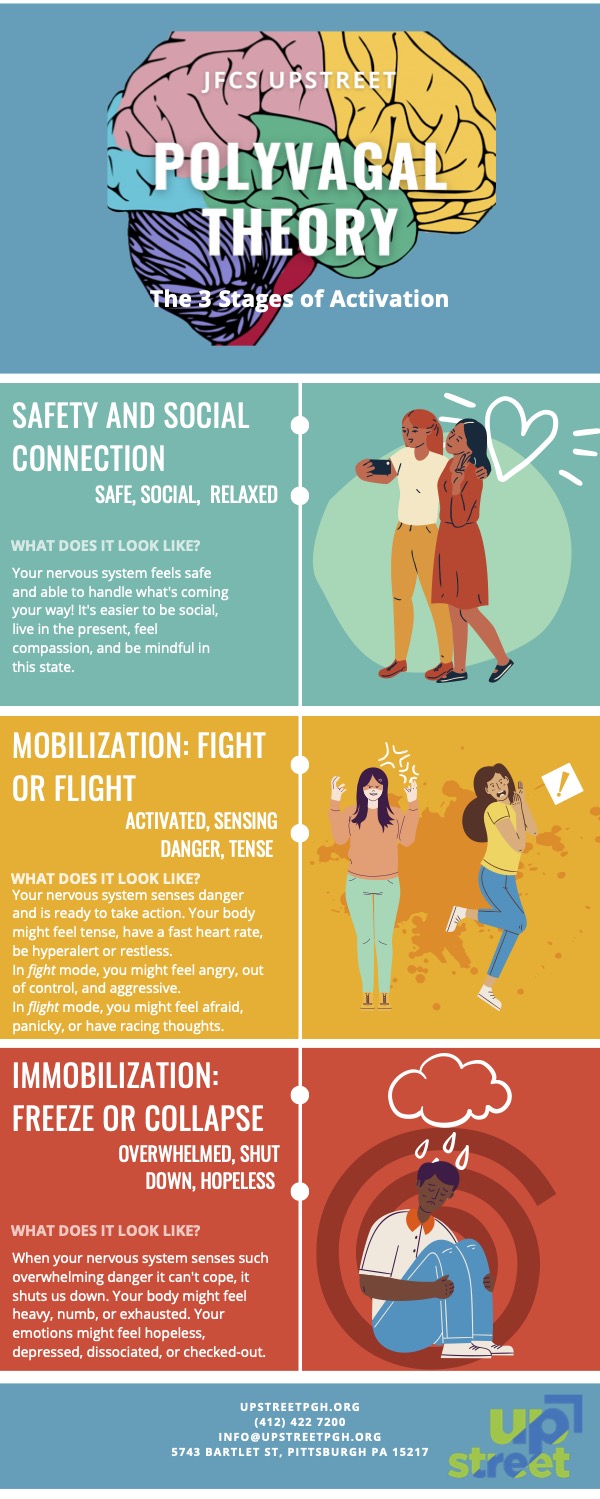
Polyvagal Theory
MSW Intern
Polyvagal Theory: How Our Bodies Handle Stress
What is polyvagal theory? It’s a scientific theory by Steven Porges about how the body reacts to stress, and revises the idea of “fight/flight” with new information! I promise, even if you don’t love science, this can be really interesting and useful to know when you’re dealing with stress or trauma in your life.
Polyvagal theory talks about three “settings” or “levels of activation” that your brain and nervous system can be at to give you the best chance of staying safe and surviving dangerous experiences. Here are what they look like:
So why is this useful to know? For one, it’s good to identify where your body and mind are at, and this is a useful outline for understanding that. If you take a few moments to listen to your body, which of these states does it feel like it’s in? Why do you think you are in that state? Checking in on yourself can be a really important tool for noticing when tension or despair are piling up inside before they become too heavy!
It’s also important because chronic, long-lasting stress or traumatic experiences can actually change how we respond to everyday life. Sometimes our brains get so used to being stuck in “survival mode” that we don’t come back to a sense of safety, or we get thrown back into survival mode over small things that remind us of big things in the past. This can make recovering from traumas and stress more difficult, because processing those feelings and growing in new ways is best done when the body and mind feel safe in the present.
So how do you feel safe in the present moment?
Here’s a list of ways to help your nervous system come back to a sense of safety and calm:
- Deep breathing. Check out our post here for breathing techniques!
- Being around people who are calm and kind can help bring us back to the present moment. This can also work with pets!
- Being outside in nature can help ground us in our surroundings and feel more calm and relaxed,
- Going on a walk or doing physical activities can release endorphins and give us a lot of physical sensations to keep us in the present.
- Do something that you find calming–if that’s drawing, crafting, making a snack or drink, using a fidget toy, listening to music, doing your makeup, journaling, or something else. Know yourself and what makes you feel good!
- Talking with a counselor can be a good way to process feelings of being unsafe, and can also help you come up with ideas for how to stay present and unwind your nervous system when it feels out of control.
Want to talk more about any of these? Come chat with us. Someone is available Monday – Friday from 10am – 8pm and Saturday and Sunday from 2pm – 10pm.

